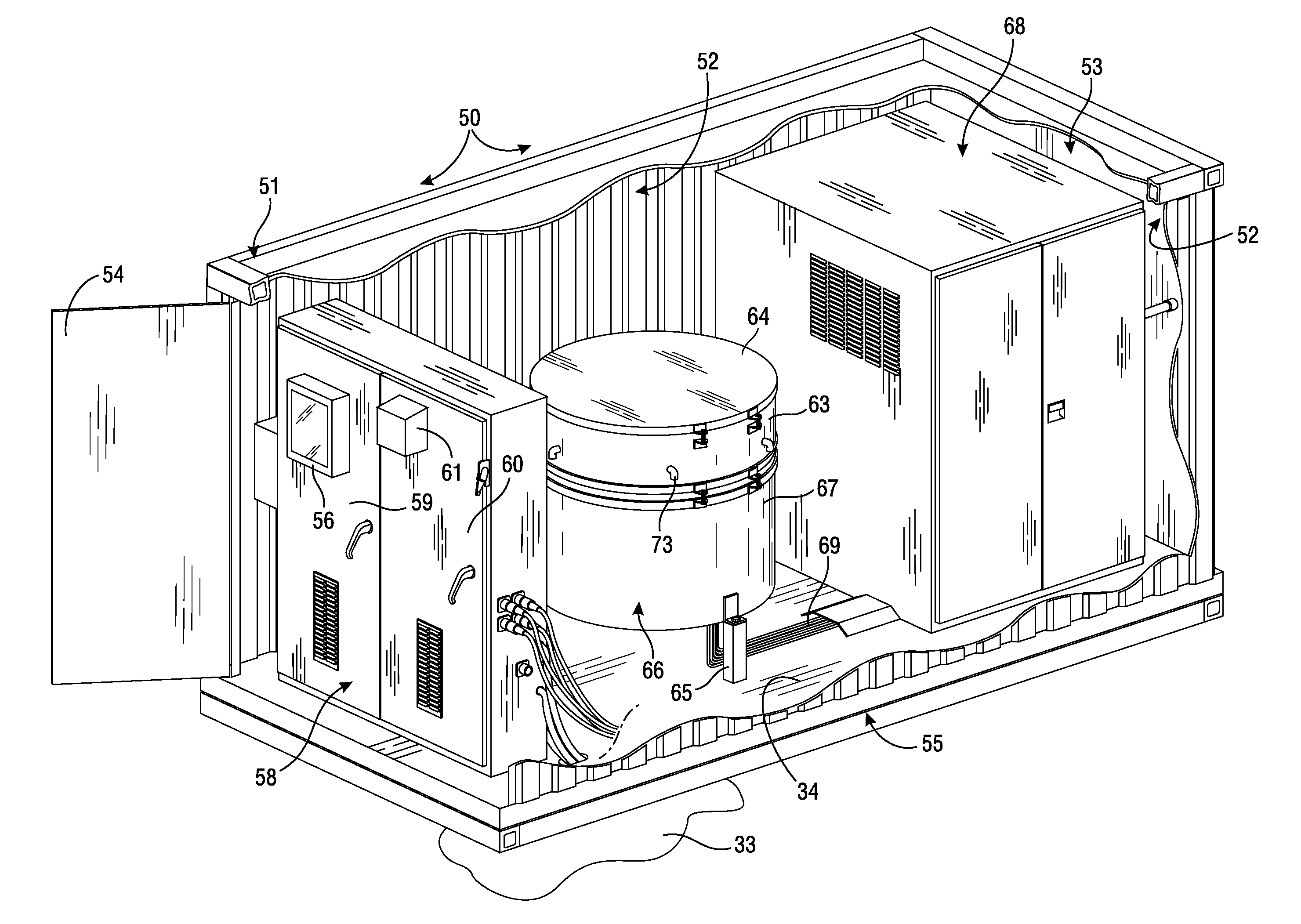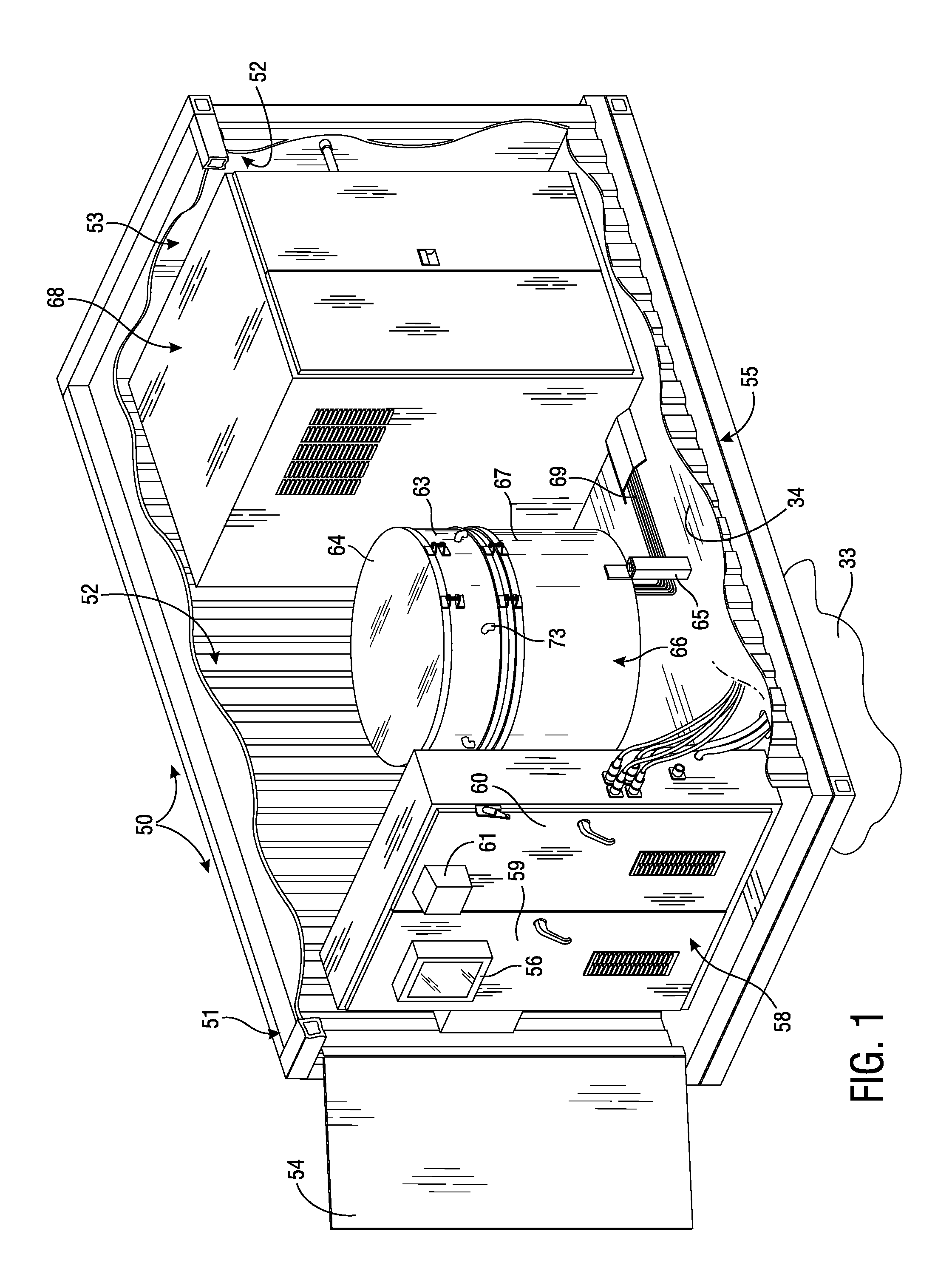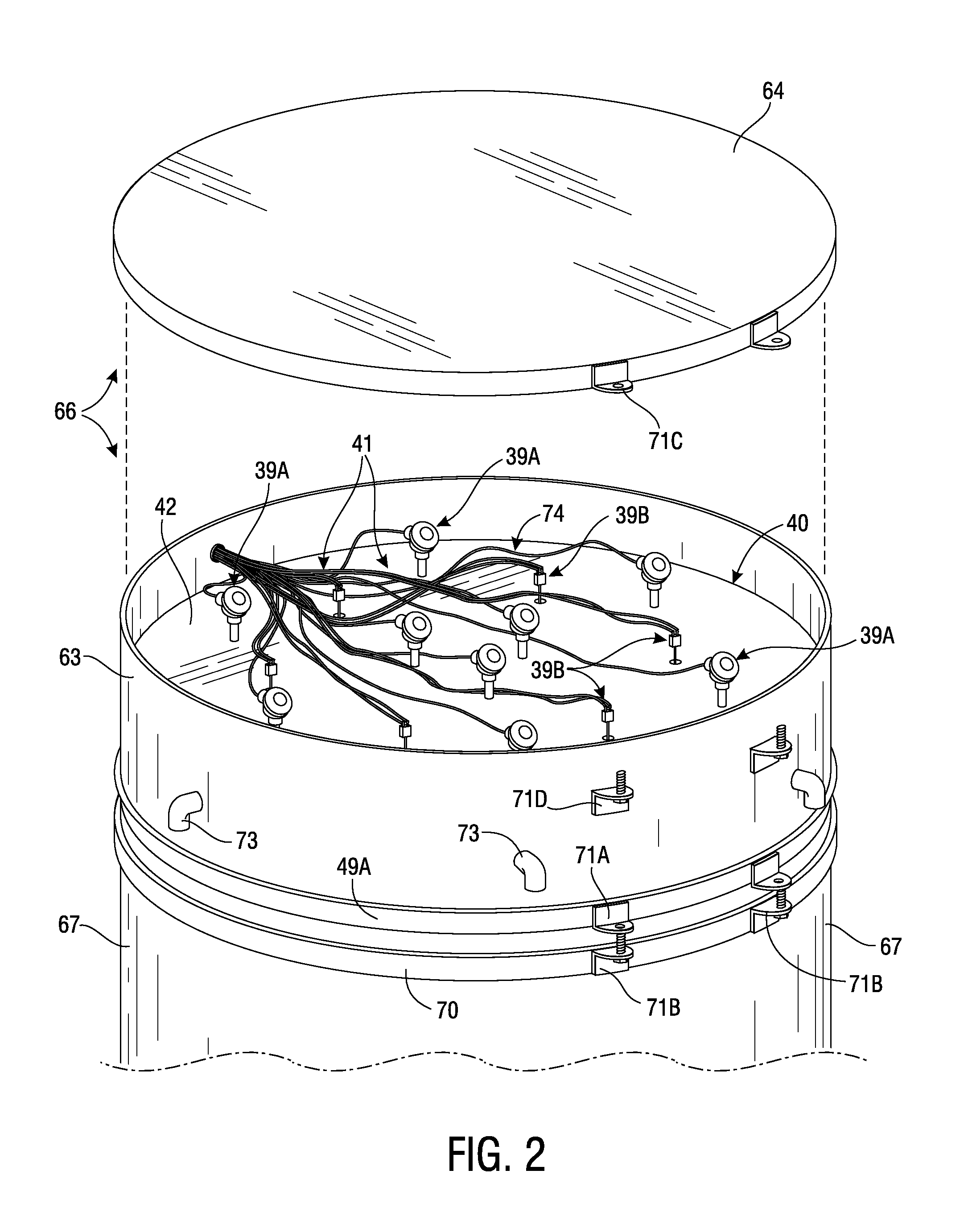Methods for Super Heated Steam Generation
a super-heated steam and generator technology, applied in the direction of water feed control, automatic control of ignition, separation process, etc., can solve the problems of insufficient natural internal pressure to push oil to the surface, prior art stream generators that have been limited in producing large volumes of steam, and able to recover approximately twenty-percent of original oil, so as to improve the super-heating ability and efficiency heat adjacent, the effect of minimizing undesirable and degrading thermal gradients
- Summary
- Abstract
- Description
- Claims
- Application Information
AI Technical Summary
Benefits of technology
Problems solved by technology
Method used
Image
Examples
Embodiment Construction
[0110]The entire disclosure of previously filed and copending U. S. utility patent application Ser. No. 12 / 59000,919, entitled “Super Heated Steam Generator With Slack Accommodating Heating Tanks,” filed Nov. 15, 2009, is hereby incorporated by reference as if fully set forth herein.
[0111]A. General Hardware:
[0112]Referring initially to FIG. 1 of the appended drawings, a modularized, superheated steam generator constructed generally in accordance with the best mode of the invention has been generally designated by the reference numeral 50. Generator 50 comprises a rigid, preferably metallic enclosure 51 that is generally in the form of a parallelepiped, and which is preferably similar in size to a standard shipping container. Enclosure 51 comprises a rigid, channel steel frame with side walls 52, a rear end 53, and a front access door 54 that exposes the enclosure interior. Enclosure 51 includes a rigid, lower base 55 adapted to be disposed upon a suitable supporting surface 33, whi...
PUM
 Login to View More
Login to View More Abstract
Description
Claims
Application Information
 Login to View More
Login to View More - R&D
- Intellectual Property
- Life Sciences
- Materials
- Tech Scout
- Unparalleled Data Quality
- Higher Quality Content
- 60% Fewer Hallucinations
Browse by: Latest US Patents, China's latest patents, Technical Efficacy Thesaurus, Application Domain, Technology Topic, Popular Technical Reports.
© 2025 PatSnap. All rights reserved.Legal|Privacy policy|Modern Slavery Act Transparency Statement|Sitemap|About US| Contact US: help@patsnap.com



